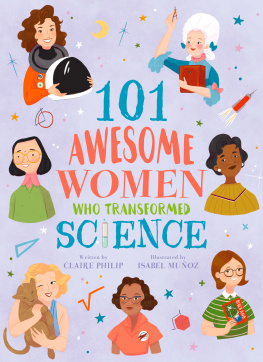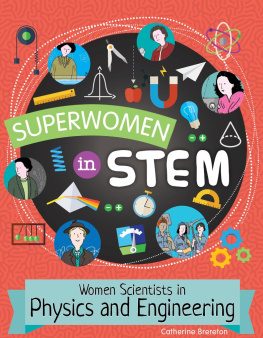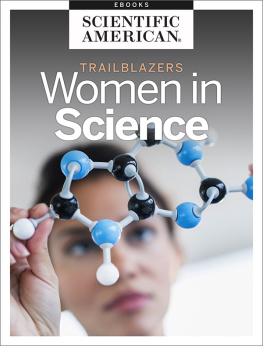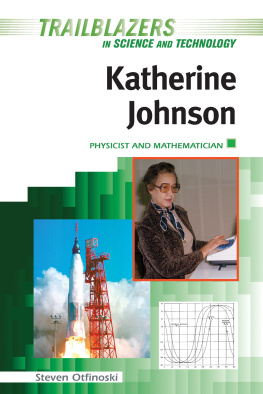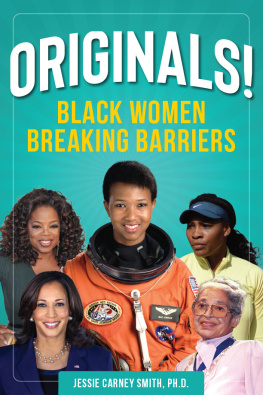Introduction
This compendium is a celebration of the groundbreaking achievements of 101 incredible female scientists, without whom our world would be a very different place. Many of these women lived in historical periods when the obstacles to their work would have seemed insurmountable. But that didnt hold back these brave pioneers! They flew in the face of societal expectations, financial and legal barriers, ignorance, and prejudice. When times were tough and pay was low (or nonexistent) they persevered because they believed in their cause, their abilities, and their strength to create change. They never gave up on their dreams, regardless of the odds.

Many of these womens contributions to science were downplayed or overlooked during their own lifetimeor even credited to male colleagues. We can now finally correct this injustice, and acknowledge the importance of their work, while standing in awe of their discipline and determination, and their willingness to think big in the face of societal small-mindedness.

One area of science in which women have always been involved is medicine, whether as midwives or healers. However, for many years, the best place for women to learn about other areas of science was in a convent.Universities were limited to men until just a few hundred years ago. In the eighteenth century, more women entered the scientific arena, yet they were still at a great disadvantage. This didnt hold back our heroines, however, and slowly but surely there was more acceptance of their contributions, as the efforts and results of female scientists became impossible to ignore.

Once women had full access to education, their numbers slowly increased and there were more openings for paid, respectable careers in science. In this collection, we delve into the fields of engineering, medicine, astronomy, technology, mathematics, and chemistry, revealing womens lives that would be worthy of amazing blockbuster movie adaptations.

Today, women have more opportunity than ever before to make a difference to the future of world. However, thanks to the changes in technology, society, and the environment, we also face greater challenges than we did in the past. Now, more than ever, we need bright young women to take their place in the worlds laboratories, and to think creatively about how to make the Earth a better, safer place. We need adventurous explorers tempted by space travel, and brilliant problem solvers who can solve the global medical emergencies of the future. Thanks to the emphasis on STEM (science, technology, engineering, and mathematics) in schools today, inspiration is all around us. The future is bright for womenso read on, and meet some of the most inspiring characters we know of. Turn the page, and get inspired!
Merit Ptah
Doctor
c.27002650 bce

Merit Ptah was born around 2700 bce in ancient Egypt during the Second Dynasty (c.2890c.2686 bce ). She is the first female doctor in history (and all of science) that we know by name!
At her grave she is named as the royal chief physician to the countrys leader, the pharaoh, who was revered as a god on Earth. As well as treating the monarch, it is likely that she would have taught and overseen many other doctors, including men, as they studied and treated their patients.
Lots of women in ancient Egypt held highly important positions, so it was not unusual for Merit Ptah to rise to such an influential role in the court. We know that women regularly became physicians and midwivesone example being Pesehet (born c.2500 bce ). She was given the title of Lady Overseer of Female Physicians. She was born after Merit Ptah, but we know less about her medical role.

The physicians of ancient Egypt had a good understanding of human anatomy (for the time), thanks in part to the practice of mummification (the preparation of the body for the afterlife). They observed how the major organs worked and learned how to heal the body using a mixture of spiritual ceremonies and basic plant-based medicine.
Athirte
Astronomer
c.19001840 bce
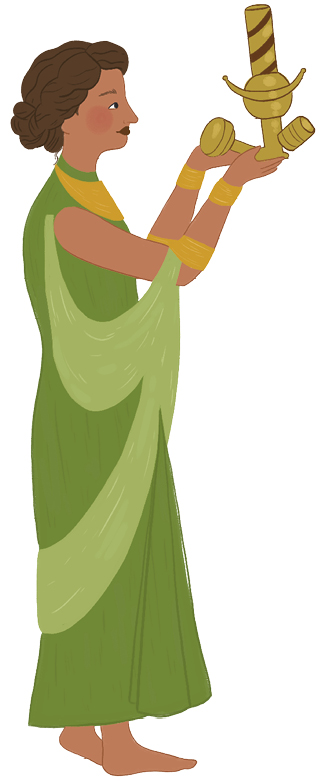
Astronomy (the study of stars, comets, planets, and galaxies), was an important part of life in many ancient culturesincluding Egypt, where a woman named Athirte was particularly famed for her talent and skill in reading the night sky.
Born around 1900 bce , she was the daughter of a pharaoh named Sesostris. Athirte became well known for her dedication to calculating the positions of the planets and was highly praised for her supreme intellect and intuition.

Her father claimed that she was very clever in the knowledge of the future, and he relied on her understanding of the stars to predict future eventsit seems that her observations were often correct!
Ancient civilizations relied heavily on reading signs from the natural world to predict important events throughout the year. By observing the heavens, it was noted by the ancient Egyptians that the great flooding of the River Nile always occurred around the time of the summer solstice, just after the star Sirius was high in the sky. This awareness allowed them to successfully predict and plan their agricultural year and thrive for thousands of years.
Agnodice
Doctor
4th century bce
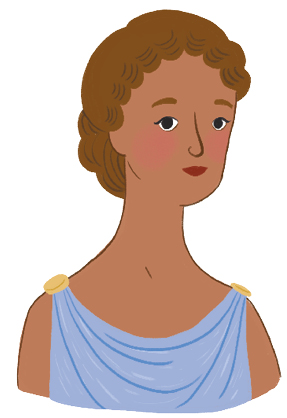
Agnodice, from Athens, Greece, is famed for being one of the first female doctors. According to legend, she dressed up as a man in order to become a doctor. This was a huge risk for her, as it was illegal for women to study medicine at this time. Once she had qualified, she continued using her disguise and utilized her expertise by treating women in childbirth. After eventually revealing her gender and identity, the laws were changed so that women could be treated by female physicians.
We do not know for certain if she was a real historical figure or a myth, yet her story is an important one. She represents the right for women everywhere to work in medicineand the right for women to have a female doctor.
Aglaonike
Astronomer
1st or 2nd century bce

